Our final morning on the River
April 21, 2018
Since we hadn’t gone searching for the black rhino yesterday, we had to get up very early today as it would be a long drive and we had to end up further north. We woke up at about 5:00 AM. Ronnie heated water for our shower and we got dressed, all in the dark, using our headlamps. Charles wanted to be on the road by 5:30 AM. Gerhard had prepared homemade chocolate chip croissants, on the campfire. Amazing. And he prepared breakfast sandwiches and a picnic lunch for us to take along. We hugged and said our goodbyes, loaded the car and headed off. It was pitch black with a canopy of a million stars.
The search for the Black Rhino
Charles tried to find the right set of tracks, ie “the road”. But it was so dark, and the floods had taken them out. After driving for about 30 minutes and getting nowhere, we decided to wait for the morning light so we could see where the road might be or where we could create one. Or else we would have to turn back and give up the search. Suddenly there was a light on the mountain in front of us, a car light. We drove to meet it and it turned out to be a Wilderness Safari vehicle from the lodge, full of people, also on the search for rhinos. So we followed them onto a road that went around the flood area, taking us in a round-about way, but at least there was now a chance again we would see a black rhino.
The Black Rhinoceros
The species was first named Rhinoceros bicornis in 1758 and the name means “double-horned rhinoceros”. Which is exactly what it is. The black rhino, also called the hook-lipped rhinoceros is not actually black, but rather varies between brownish and gray. Why then is it call a black rhinoceros? As I described in my post on Zambia (please see that post), the white rhino’s name came from the Afrikaans and Dutch word wyd, meaning wide as the that rhino has a very wide, square upper lip, unlike the black rhino which has a pointed or hooked upper lip. So the wyd rhino became the white rhino and to distinguish them, the hooked-lip rhino became the black rhino. The white rhino, by the way, is the same color a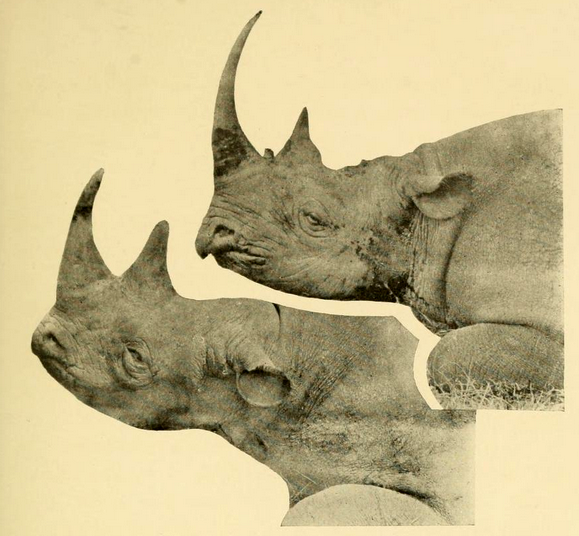 s the black rhino, i.e., gray. I found this photo on the web that compares the two (by Tjader, Richard, 1869-1916 – The big game of Africa, Public Domain, https://commons.wikimedia.org/w/index.php?curid=26192634)
s the black rhino, i.e., gray. I found this photo on the web that compares the two (by Tjader, Richard, 1869-1916 – The big game of Africa, Public Domain, https://commons.wikimedia.org/w/index.php?curid=26192634)
The adult black rhino stands 55-71 inches high and get as long as 12 feet. And an adult weighs about 3,000 pounds, although a large male can be as heavy as 6000 pounds! The black rhino is endangered mostly due to poachers as their horns can go for millions of dollars. Imagine killing such a beautiful animal for a horn that is actually just keratin – the same as the human fingernail. And when cut, it grows back. But poachers kill the animal and then cut off the horn. The front horn can grow as long as 20 inches and the back horn is shorter. The rhino uses its horn for defense, intimidation and digging up roots to eat. Another difference between the black and white rhino is that the hooked-lip us used to grasp leaves and twigs when eating. The white rhino’s wide upper lip is used for eating grass. And while the rhinos eyesight might be poor, his sense of smell and hearing is very sharp. As an aside, since I have an interest in sleep, there is a published study about the sleep of the black rhinoceros. Males sleep longer on average twice as long as females.
The search continues
We drove in the dark for a while. We lost sight of the other car lights but now we had the road. By 640, after an hour on the road, the stars had disappeared and there was a dark blue glow in the sky. Somewhere behind the mountains the sun was rising. The first light appeared at 6:58 and we turned off our headlights. By 7:05 the sky at the east turned orange with just a handful of puffs of clouds and the day was upon us. By 7:15 it was light out and at 7:27, the sun crested over the mountains and once again, the shadow of our car was racing with us.
While we had been driving between the mountains, now the mountains were no longer hugging us. We could see that we were in a large plain with green patches of fresh blades of grass springing up giving the whole area a green sheen with patches of white and yellow flowers in red dirt. Charles said he has never seen it so green here.
We could see the other car ahead of us again, but it veered left and we parted ways as Charles decided to go straight. We will never know if they found a rhino.
We were in the Hunkap River Valley. And it was so, so beautiful. There were desert zebras silhouetted on top of the hill. But no rhino. We drove around for about 45 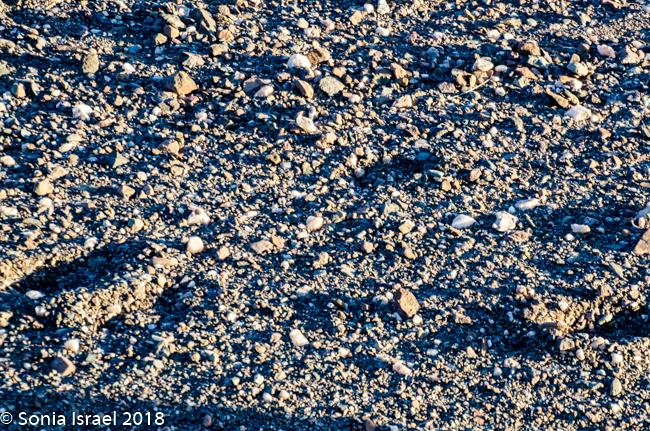 minutes. At one point we saw rhino tracks heading towards a fresh water puddle. But we had just passed that puddle and there were no rhinos. Charles knew that with the rhino’s sharp sense of smell we needed to be up wind of them. So he paid attention to the vegetation and the wind direction and kept driving.
minutes. At one point we saw rhino tracks heading towards a fresh water puddle. But we had just passed that puddle and there were no rhinos. Charles knew that with the rhino’s sharp sense of smell we needed to be up wind of them. So he paid attention to the vegetation and the wind direction and kept driving.
And then in a large field with bushes all around, Charles stopped the car, killed the engine and popped the roof. There was my desert black rhino!
There are only about 100 desert black rhinos in all of Namibia. The exact number is kept confidential to keep poachers from knowing. But likely there are only 1 or 2 in this area. Most of the black desert rhinos have been dehorned to keep poachers from killing them. After all, it is the horn the poachers want. But the horn grows back just like a fingernail and then they have to be dehorned again. But our rhino had a big horn! No dehorning for him!
I stood up and was shooting pictures while Charles walked to the edge of the bush line. He called us over and we jumped out of the Land Cruiser and walked over as quickly and quietly as we could. Not only is the rhinos sense of smell strong but his sense of hearing is too. We stood there, being eaten alive by bugs, and shooting, swatting, shooting, swatting. The rhino stood very stand still. Then he slowly turned 360 degrees. A full circle. He did that several times and we figured he sensed us and we were making him nervous. So we left, leaving him in peace.
We got back to the car, put on bug repellent (better late than never) and said good-bye to the rhino.
I got the picture. But it is not just about the photography although I love that part. It is about seeing all these magnificent, many endangered, animals in their natural habitat. Or seeing people in their indigenous environment. It is about being in that moment.
The Flat Top Mountain
There was one flat top mountain in this area, that you could see from everywhere in the valley. It was shaped like a volcanic, red with polka dots of green surrounded at its base by yellow flowers, the Devils horn. The plants produce long, hooked seed pods. The hooks catch on the feet of animals, and as the animals walk, the pods are ground or crushed open, dispersing the seeds. We saw the mountain from all different angles as we drove and it was beautiful from each one. In the midst of the green and yellow, it looked like there was a white line. It was eight-day grass. This is grass that grows eight days after rain with a white feathery tip. And when I got out to take a panoramic of the vast plain I noticed little purple flowers – purple Cleome. So now we had red dirt, green grass with yellow, white and purple accents.
We drove off. The roof and windows open, sun streaming in and the gentle breeze 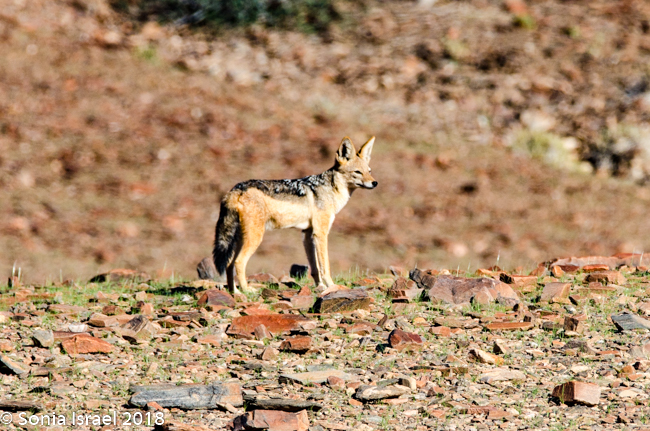 keeping us cool as the temperature rose. We saw a Black backed jackal (called a BBJ).
keeping us cool as the temperature rose. We saw a Black backed jackal (called a BBJ).
We drove through the river bed. The terrain changed back to rocky desert with no more grass or strips of yellow flowers. The mountains closed in on us again. And we drove along the deep river bed caused by the heavy flooding in the past. This had been one wide and deep river.
Picnic breakfast
We stopped to eat our picnic breakfast just sitting on some rocks. No table this time. We were on a tight schedule and still had a long drive ahead of us. We drove some more, heading back and then we were back in familiar territory.
We drove past our hidden campground, which by now I was sure had been dismantled. We drove past trees that I had begun to recognize. It had been 2.5 days here and I was starting to know my way around. I began to understand how the guides find their way. But it was time to head east along the river again and then veer north to our next destination.
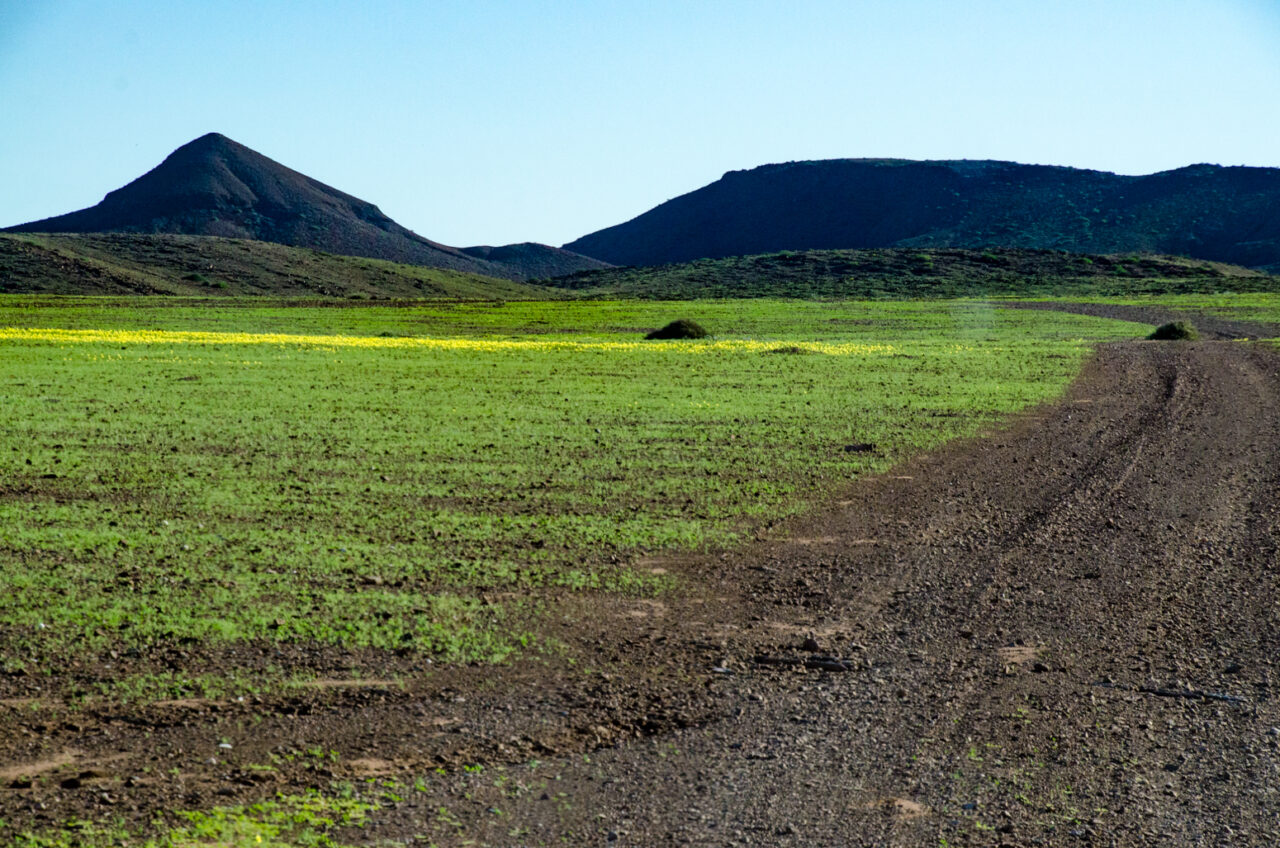
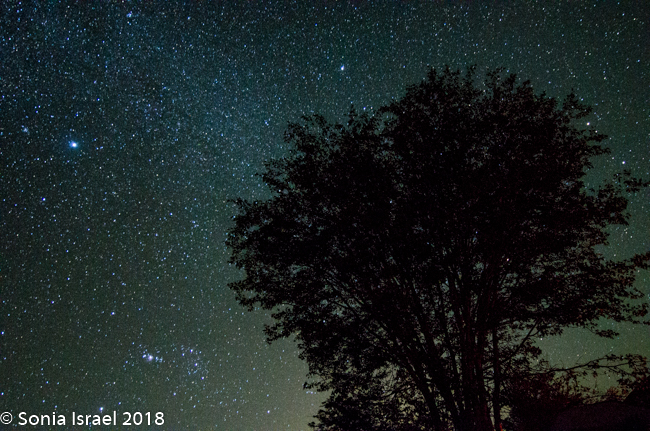
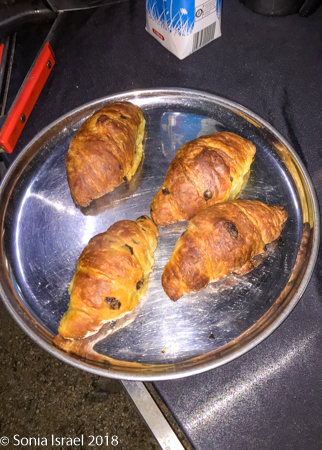
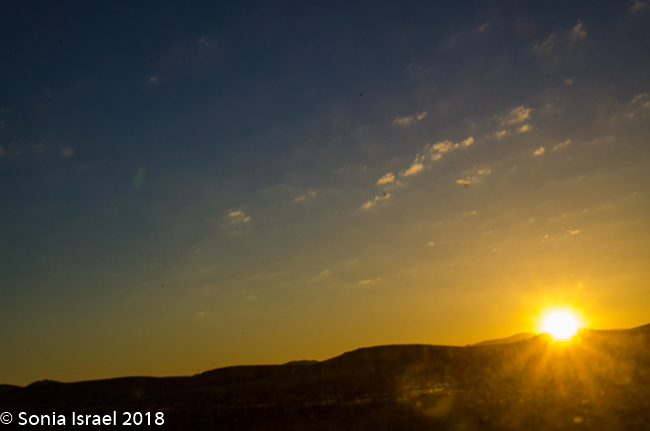
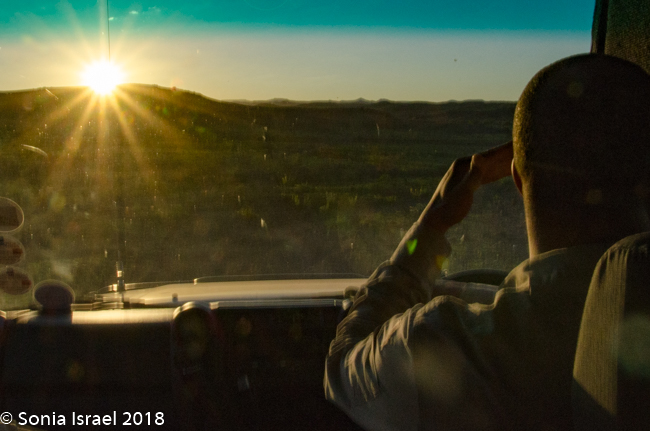

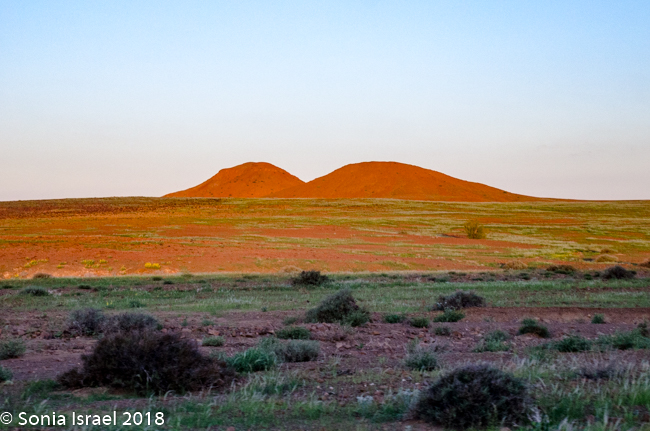
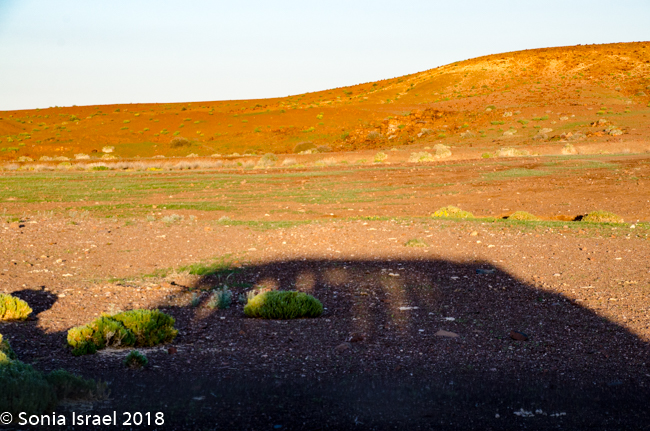
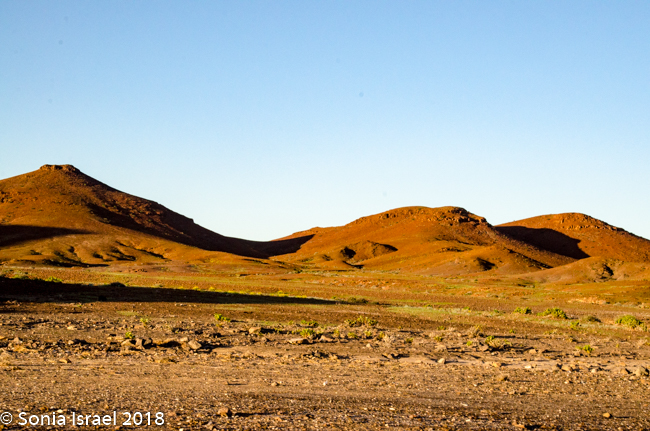
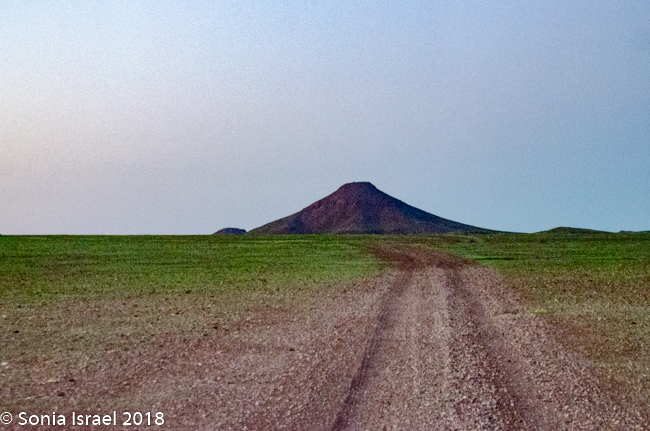
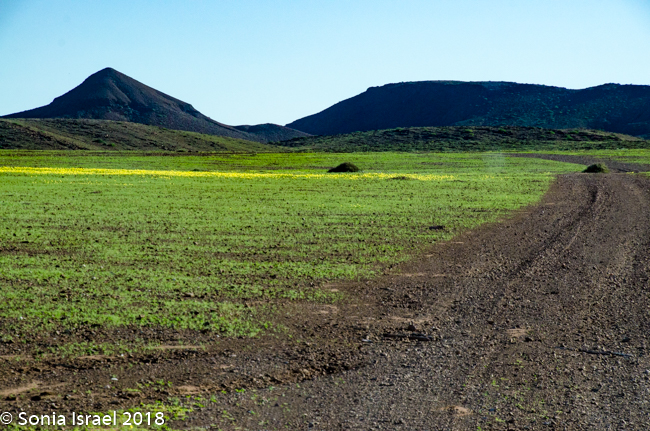

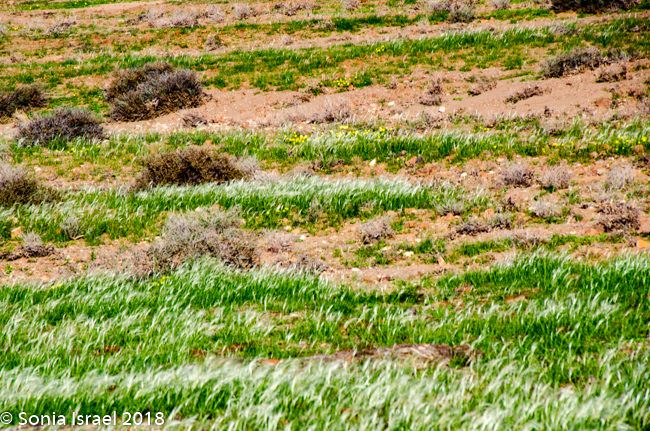
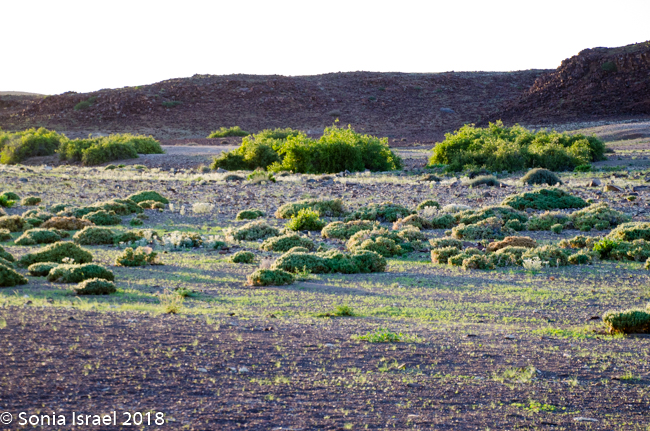
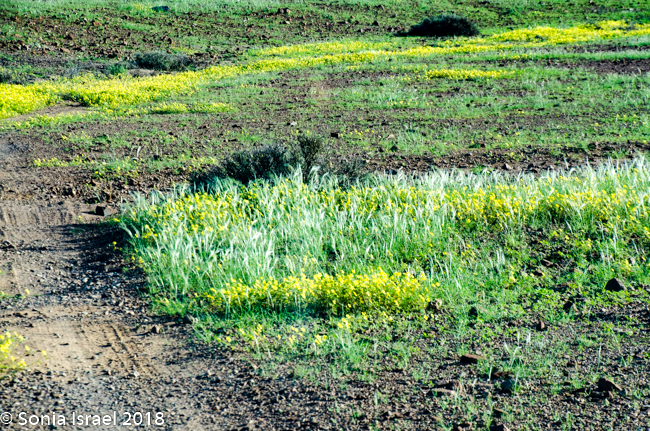
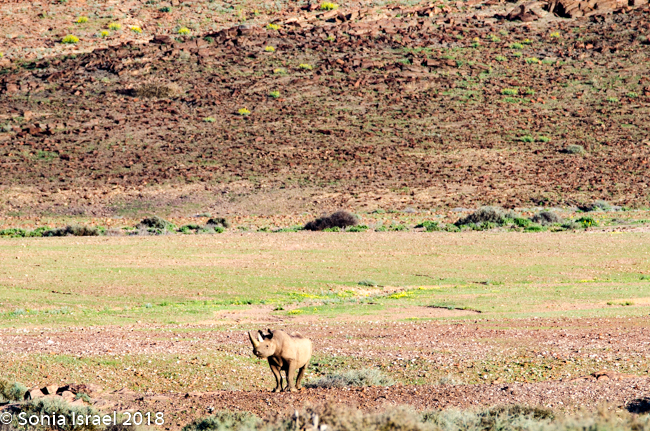
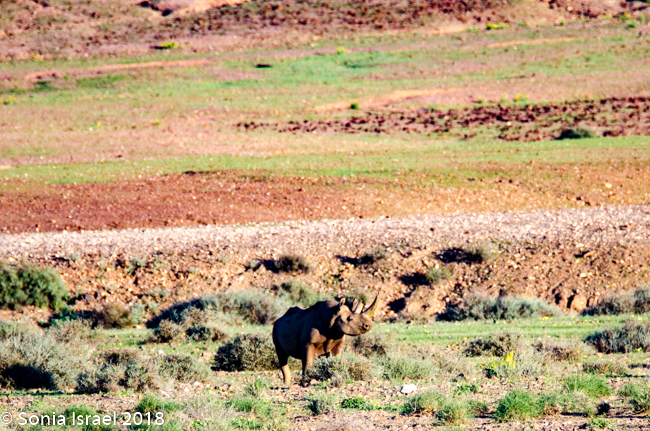
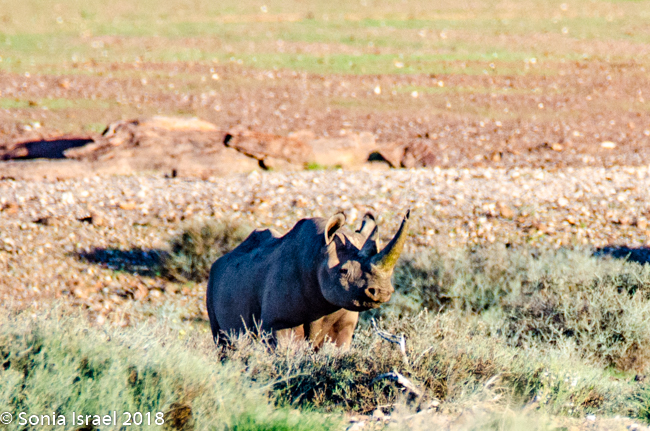
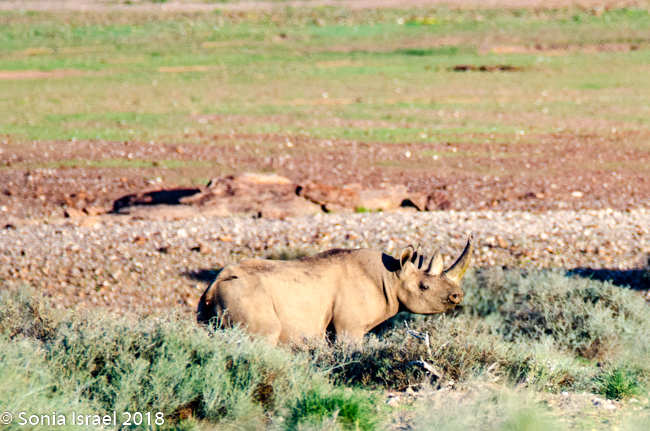
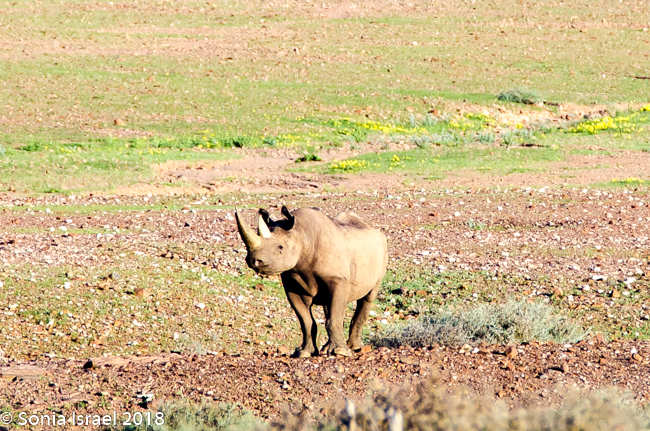
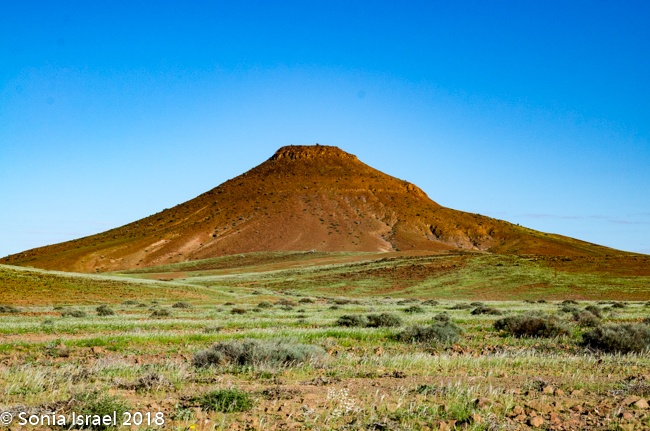
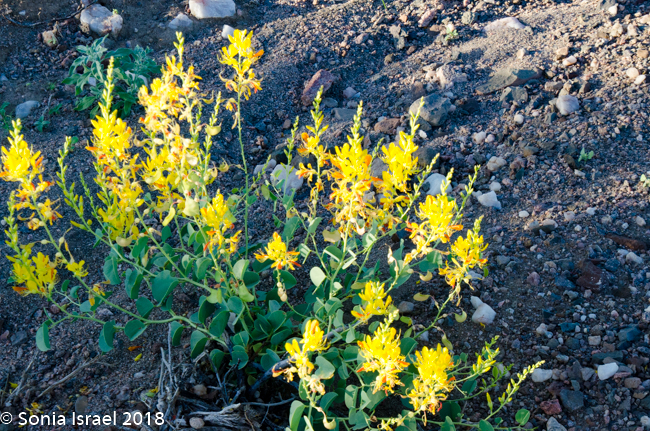
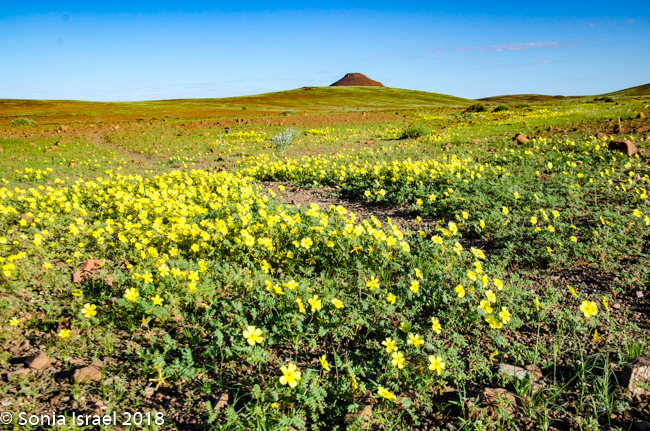
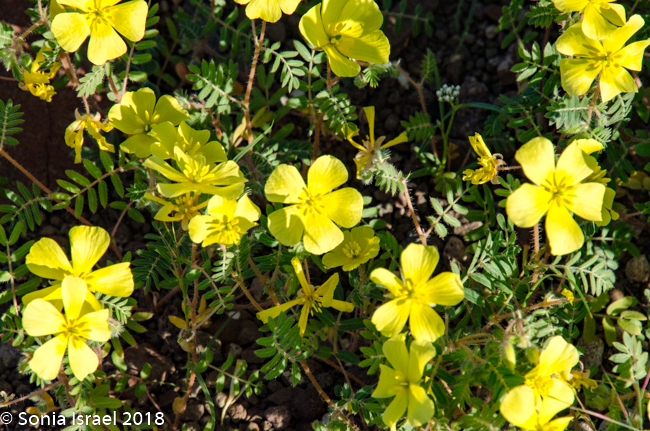
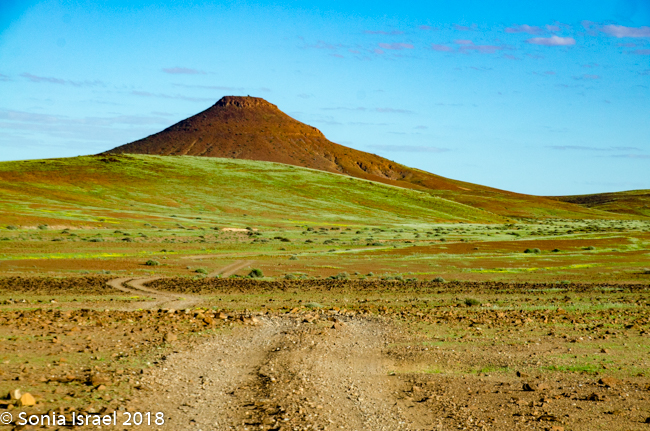
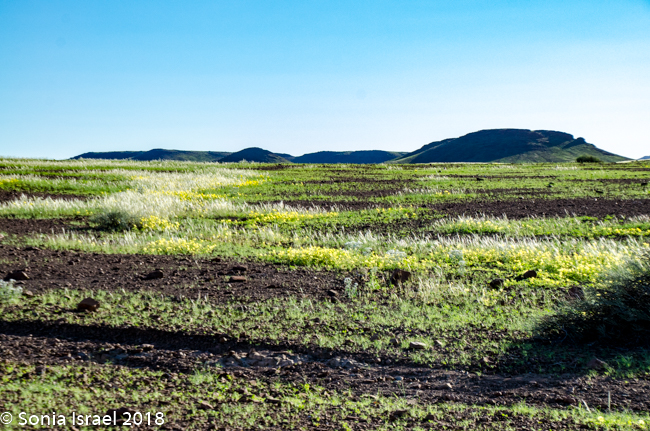
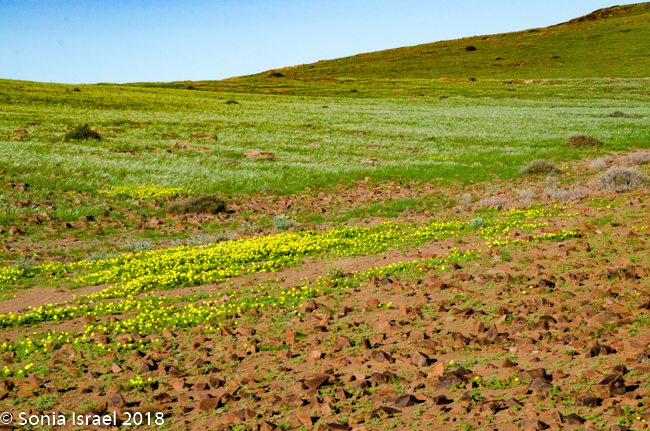

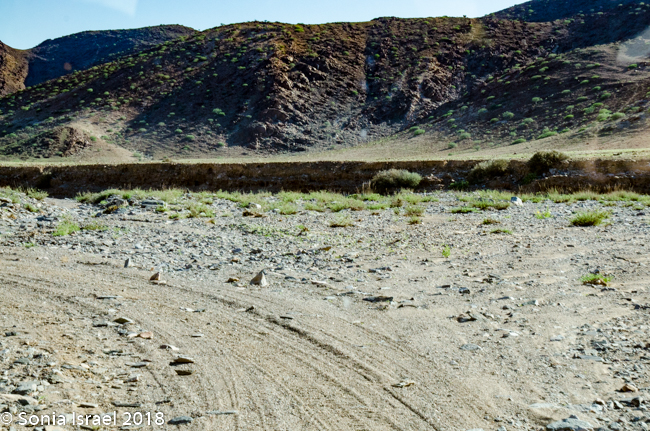
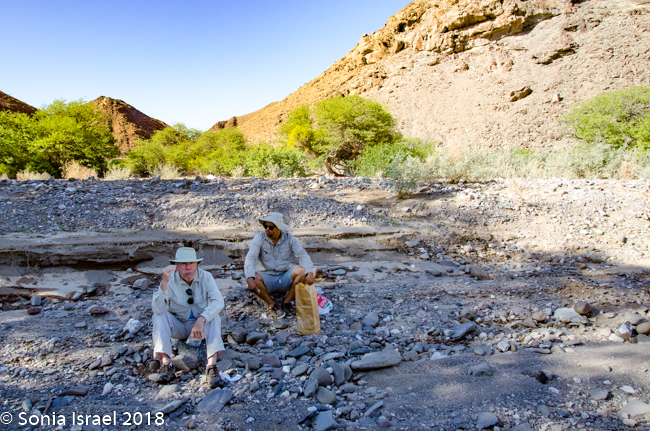

Leave a Reply